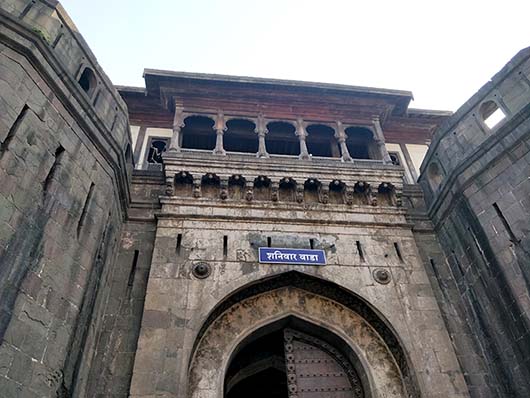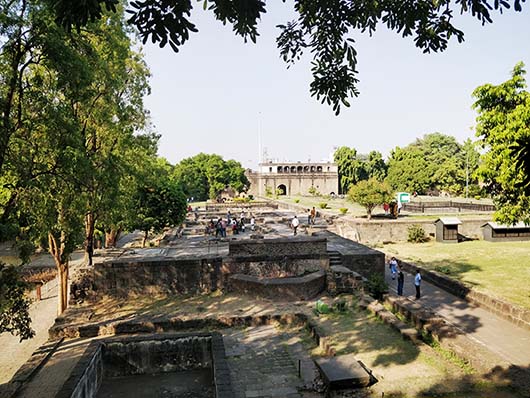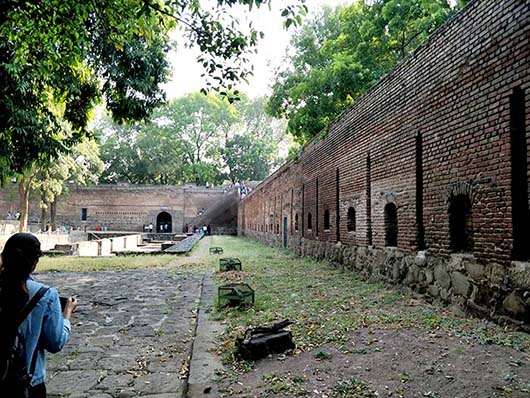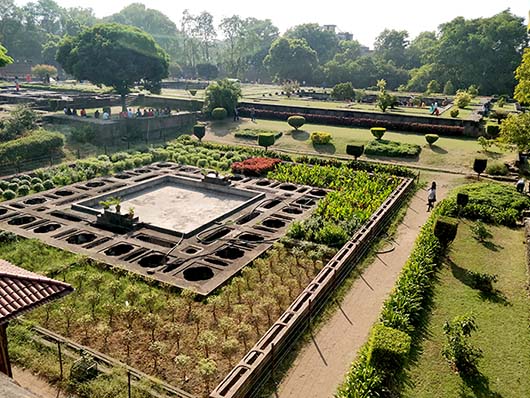- 3004 views
SHANIWARWADA
A formidable weight of the Maratha history sits on the numerous ‘peths’ that make Old Pune. Pune was a Maratha stronghold and the seat of the Peshwas, one of the five ruling clans that composed the Maratha Empire.
Post the disintegration of the Mughal Empire in the 18th century, the Marathas emerged as a significant regional power in Pune. This not only marked the growth of the Empire but also coincided with the first kind of urbanisation in Western India. The 18 peths or wards created by the Peshwas were the birthplace of the wadas of Peshwai Pune.
Situated on deep narrow plots, Wadas are usually two to three storeys high. The symbolic core of Old Pune is Shaniwarwada (The Saturday Estate) or the Peshwa’s residence. Built in the year 1732 by Bajirao Peshwa the First, the Shaniwarwada is a large building with rooms arranged around an open courtyard, balconies, carved pillars, the classic timber supports leading to stairways and halls, latticed windows, sculpted ceilings, decorative Jejuri limestone wall niches and the Mughal influenced Hazari Karanje (fountain of thousand spouts). It also has massive wooden doors, big enough for elephants to walk through and five gates (Dilli darwaza, Mastani darwaza, Khidki darwaza, Ganesh darwaza and Jambhul/Narayan darwaza).
A fire in 1828 (which is believed to be the commencement of the curse on the Peshwas) destroyed much of the inlay work and timber details of the Shaniwarwada but the granite rampart remained intact.
In the present times, Shaniwarwada has the reputation of being the most haunted place of Pune. The year 1740 saw the early and tragic death of Peshwa Bajirao I, followed by a series of other unfortunate deaths -- the killing of Vishwas Rao in the third battle of Panipat (1761), the sudden demise of Nanasaheb, and Madhavrao.
The locals of Pune do not recommend visiting the Shaniwarwada and its neighbouring structures of Budhwar Peth either alone or after the sun sets. Old residents and guides of this monumental structure narrate tales of supernatural activities. Unfortunately the wada which was once primarily known for its architectural brilliance has now become a nucleus of horror tales.
It is very strongly believed that the wada is haunted by the spirit of Bajirao’s grandson Narayanrao who was killed in 1773 on the orders of his own family.
After the death of both Vishwasrao and Madhavrao, their younger brother Narayanrao was appointed as the next Peshwa much to the disappointment of his guardian Raghunathrao and his wife Anandibai.
Aware of Narayanrao’s conflicts with the hunting tribe Gardi (the Bheels from Central India), Anandibai along with Raghunath hatched a plan to capture Narayanrao.
On the night of Ganesh Chaturthi, the Gardi tribe entered Shaniwarwada brutally killing Narayanrao. Narayanrao kept shouting, “Kaaka! Maala vaachva!” (Uncle save me!), but no one came to his help. His body was chopped into pieces and thrown into the Mutha river. The locals today claim that on every full moon night the spirit of Narayanrao can be heard shouting around the Shaniwarwada, reminding them of the gruesome death he died.
 Government of India
Government of India





 Recognizing the ongoing need to position itself for the digital future, Indian Culture is an initiative by the Ministry of Culture. A platform that hosts data of cultural relevance from various repositories and institutions all over India.
Recognizing the ongoing need to position itself for the digital future, Indian Culture is an initiative by the Ministry of Culture. A platform that hosts data of cultural relevance from various repositories and institutions all over India.

